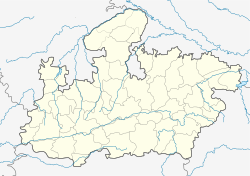Kayatha
|
Kaytha कायथा Kayatha |
|
|---|---|
| village | |
| Coordinates: 23°14′13″N 76°01′08″E / 23.237°N 76.0189°ECoordinates: 23°14′13″N 76°01′08″E / 23.237°N 76.0189°E | |
| Country | India |
| State | Madhya Pradesh |
| District | Ujjain |
| Tehsil | Tarana |
| Elevation | 495 m (1,624 ft) |
| Population (2011) | |
| • Total | 8,040 |
| Time zone | IST (UTC+5:30) |
| ISO 3166 code | MP-IN |
| Census code | 471803 |
Kaytha or Kayatha is a village and an archaeological site in the Ujjain district of Madhya Pradesh, India. It is located in the Tarana tehsil.
Several Chalcolithic sites have been discovered in the Malwa region of central India. The site at Kayatha, situated on the right bank of the Choti Kali Sindh river (a tributary of Chambal river), is the type site of this culture, known as "Kayatha culture".
Excavations conducted by V. S. Wakankar (1965–66), and by M. K. Dhavalikar and Z. D. Ansari (1968) revealed layers from five different periods:
The Kayatha culture represents the earliest known agriculture settlement in the present-day Malwa region. It also featured advanced copper metallurgy and stone blade industry. Using calibrated radiocarbon, Dhavalikar dated this culture to a period spanning from 2400 BCE to 2000 BCE. However, calibrated dates by Gregory Possehl place it between 2200 BCE and 2000 BCE.
According to the 2011 census of India, Kaytha has a population of 8040, including 4143 males and 3897 females. The sex ratio of the village is 955. The effective literacy rate (excluding children below 6) is 70.5%.
...
Wikipedia

